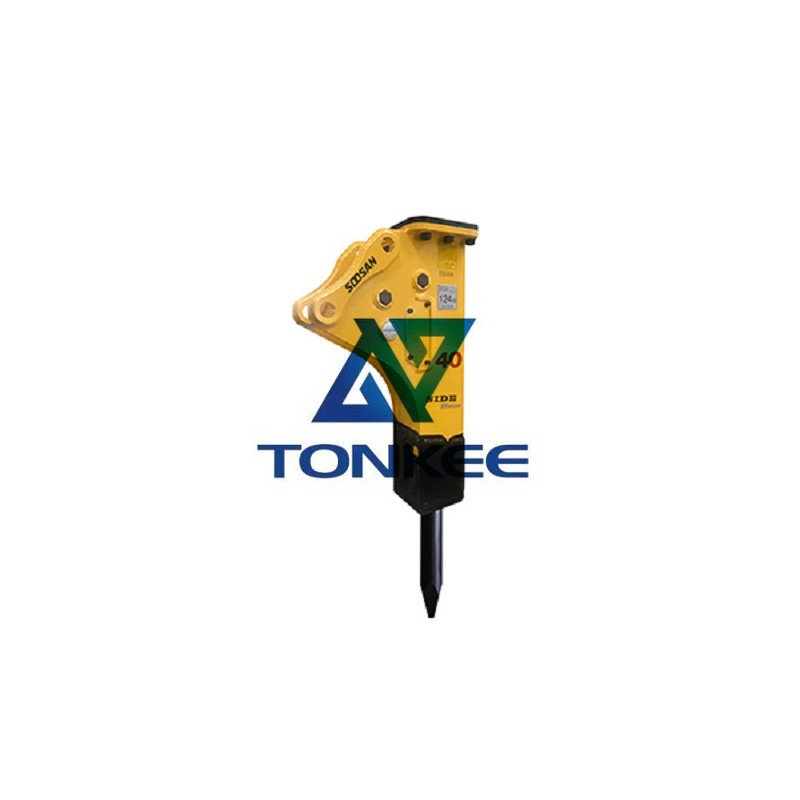
At the core of the Soosan SB40TS-P's impressive performance is its hydraulic system.
The breaker utilizes hydraulic power from the carrier machine (e.g., excavator or backhoe) to generate powerful percussive blows. These blows are transmitted through the working tool, usually a chisel, which impacts the material being broken. The hydraulic system consists of a hydraulic cylinder, control valve, accumulator, and other components, all working in harmony to deliver precise and controlled force.
The SB40TS-P is built to withstand the rigors of demanding work environments. Its construction typically includes high-quality steel components that are heat-treated for maximum strength and durability. These robust materials ensure the breaker can handle the intense forces generated during operation without experiencing premature wear or failure.
One of the critical factors that determine the performance of a hydraulic breaker is its operating weight. The SB40TS-P's weight is carefully calibrated to achieve an optimal balance between power and compatibility with various carrier machines. When mounted on an excavator or similar equipment, the breaker's weight needs to be well-matched with the carrier's lifting capacity and hydraulic system to ensure efficient operation.
The impact energy of the SB40TS-P is a key specification that indicates the force delivered with each blow.
A higher impact energy allows the breaker to tackle harder materials and complete tasks more quickly. Manufacturers usually provide a range of impact energy settings to suit different working conditions and materials.
To ensure safe and efficient operation, the hydraulic breaker requires a specific operating pressure and oil flow rate. The carrier's hydraulic system must meet these requirements for optimal performance. Operating outside the recommended range may lead to reduced efficiency, increased wear, and potential damage to both the breaker and the carrier.
The working tool diameter is another crucial specification of the SB40TS-P. The tool diameter directly affects the breaking efficiency and the size of the material that can be effectively broken. Different working tools can be attached to the breaker, allowing operators to adapt the tool selection to the specific task at hand.
When selecting a hydraulic breaker like the SB40TS-P, it is essential to consider the carrier machine's weight compatibility. The breaker should be compatible with the carrier's weight class to ensure stability and prevent damage to both the breaker and the carrier. Manufacturers provide guidelines to help users choose the right breaker for their carrier machines.